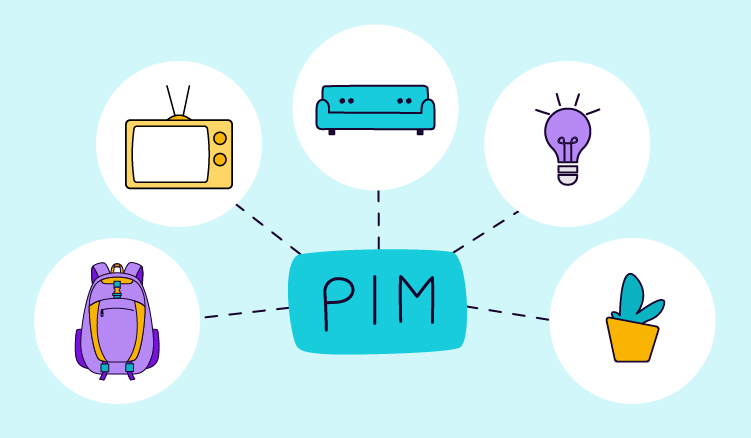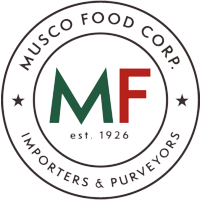
Keep the good stuff coming
Subscribe to our blog newsletter and get monthly content that helps you manage product data smarter.
No spam. Just real value.
Your product data matters. After all, 87% of consumers say that inaccurate product descriptions make them unlikely to repeat a purchase. That same number of people also agree that product content is important to them when shopping online (though to be honest, that makes me more concerned about the 13% who don’t pay attention to content when shopping online—what are they looking at instead? Is just the SKU number enough for them? And if so, how do we find more of these easy-to-please customers? 👀). Whatever the case, it seems pretty clear that accurate and engaging product information is vital if you want to make it in ecommerce.
Managing the massive amounts of data involved can be challenging though, so enter stage right: Product Information Management (PIM) software, a game-changer for ecommerce businesses aiming to stay ahead of the curve. However, with the vast amount of software options and advice available, it can be overwhelmingly difficult to sift through the noise and find truly impartial and helpful information about how PIM solutions actually work in real life.
For that exact reason, I've decided to cut through the clutter and bring you something genuinely valuable (if I do say so myself). Through the lens of five unique authentic customer stories, I’ll show you the different ways PIM software can transform an ecommerce business. From small startups to established brands, these real-life examples provide a clear, unbiased view of how PIM systems are being used to streamline product information management, improve customer experience, and ultimately drive sales.
 Case #1: How ditching spreadsheets saved Leigh Country 99 hours a month
Case #1: How ditching spreadsheets saved Leigh Country 99 hours a month
Before PIM:
- Issues with inaccurate product information
- Frequent customer complaints
- Two weeks to get products to market
After PIM:
- Reduced product errors and complaints
- 24 times faster time-to-market
- Rapid return on investment within 12 months
The problems:
Until March 2022, family-owned design, import, and distribution company Leigh Country relied purely on spreadsheets to manage its entire ecommerce business. As a result, the team experienced communication gaps and mounting product errors since critical decisions could be made without the necessary team members present. This spreadsheet-based setup created a recipe for confusion and delays, and not having the right tools on hand to combat incorrect product information quickly led to an increase in negative customer reviews.
To make matters worse, manual data gathering meant adding new products to their catalog took an excessive two to three weeks, and only once each asset was manually gathered could they start to move the product onto Shopify. “I kind of became exasperated by it after a few months,” admits Martin Valdez, Digital Marketing and Brand Manager.
Managing their digital assets was another headache, with files scattered across various platforms like Google Sheets and Dropbox. For some vendors, they had to resort to sending digital assets by email because their digital assets were so unorganized. Finding and organizing these images often took days, causing delays in adding new products to vendors.
The solution:
Determined to find a better way, they started to look for a solution and stumbled upon the concept of Product Information Management software. After some shopping around, they ultimately chose Plytix because of the responsiveness and understanding they received from the Sales and Customer Success teams—and the rest is history.
The impact of implementing PIM software at Leigh Country has been profound. They've experienced rapid growth, soaring sales, and more time to dedicate to other tasks. Their time to market has improved dramatically, reducing what used to take two to three weeks down to just a few minutes.
Leigh Country has seen a swift return on its investment within just 12 months, and they’ve been able to improve their data organization and team management significantly. “It's much quicker. Much more efficient compared to previously,” says Ecommerce Manager Kathie Rieser.
With a PIM in place, the idea of global expansion is a much less daunting task. “If somebody had said two years ago, we're going to expand to Europe, I would not have been happy. But, with things being as organized as they are now, I have no problem with expanding globally,” explains Kathie. Today, PIM lets them easily manage additional data like compliance documents required for new markets, saving time and paving a smooth path to international growth.
Sitting comfortably? Read their whole story right here.
Case #2: How Baldinini took big steps in a digital direction with PIM
Before PIM:
- Information in hundreds of scattered CSV files
- Separate system for digital assets
- Needed a way to syndicate data to multiple marketplaces
After PIM:
- Everything in one system
- Increased efficiency, faster communication
- Improved collaboration across departments and with clients
The pre-PIM situation:
Family-owned Baldinini started as a small artisan workshop and has since grown into a leading Italian footwear and accessories manufacturer, leaping from an Italian-only market into dominating international waters. They’ve restyled their workshops over the years and have now taken steps to digitize their internal processes.
Sara Rizzi, Digital Media Specialist at Baldinini, has this to say about their goal: “As our portfolio started to expand, it became challenging to keep up with scattered product information and assets. It became difficult to find content; for example, an item’s availability and the market in which it’s selling. It also made it increasingly difficult to differentiate assets. I needed digital structure—which led to the need for PIM.”
She adds, “Before PIM, our product information was being managed in CSV files.” Sara and her team would have to open up multiple files at once—website translations, sizing, availability, and specialty products—just to find information for a listing. “Once complete, you’d open up a digital database to view assets, then look for the correct image to link with the product.” Given the time-consuming nature of this method, it wasn’t exactly the most practical solution.

The situation now:
When Sara got the green light to begin researching a suitable solution, she quickly learned that they required more than one tool. "We needed something for a) product information management and b) channel integration," she explains. Of course, if you’re looking for these, the chances of you needing a PIM tool with DAM capabilities is high because all your content will feed out from one solution.”
“Once we found the right PIM, it was a no-brainer—it’s one tool with so many functionalities. It can be used for multiple reasons across marketing and sales. In fact, our customer service team uses it too, as well as some of our partners. It’s a plug-and-play solution that doesn’t require much training.”
- Sara Rizzi, Digital Media Specialist at Baldinini
Like most ecommerce businesses operating across multiple marketplaces, Baldinini has complex product content. Fortunately, Plytix (their chosen solution) is a flexible PIM and has easily adapted to their needs. "Now, we’re now able to store multiple versions of our product information, according to the individual’s site’s needs, as well as syndicate ERP data directly into PIM to manage inventory.”
Today, everything at Baldinini is more efficient. “I’ve saved time on pointless communications with clients, and everyone is on the same page in the organization," says Sara. "We are able to do our work faster, without any manual searching or errors. Also, we can update assets automatically, and control everything from one place!”
Want to follow in their footsteps? Then check out the full story here.
Case #3: How Allé Designs used ground-up digitalization to beat out competitors
Before PIM:
- Primarily paper-based organization
- Excessive catalog printing costs
- Time-consuming manual data entry
After PIM:
- 45% more sales in one year
- Massive reduction in catalog costs
- 10x faster response time to clients
Life before PIM:
When Sandra Perry, the VP of Marketing, came to furniture company Allé Designs, she literally bought a bunch of papers. They had relied on their print catalog as their source of product information for a long time, and the company was drowning in manual data entry for each and every order or request that was placed.
She knew it was a fixer-upper and that it was time to change these unsustainable practices, but she didn't know how much work she was in for. Her challenge was to turn a paper-based organization into a flourishing B2B furniture brand by finding the right solution to take the business online.
She began looking for a single place for all her information to live online, organized, and ready to use. That’s how she found Plytix PIM, and by implementing a PIM and doing a full overhaul of the company brand, Sandra was able to turn the company around.

What happened next:
"At first, I was really hesitant," she admitted. "But then I remembered that I was spending around $6,000 for a graphic designer to do a catalog that I needed to be updated all the time. So I decided to spend the money to bring the company out of the dark ages and get our information online. And I am so glad I did! I definitely got my investment back."
PIM software gave Allé Designs a place where they could find everything. But what really made the difference for them was being able to tailor content for customers, and also being able to work with their products quickly. At one point, Sandra was able to create a spec sheet in record time for a client who wanted custom work. The speed and professionalism helped her land an $80,000 order.
Allé now handles tons of products and operates completely digitally. They are proud to work with Disney, Lancôme, and L’Oréal, among others. They increased their revenue by 45% in the course of a single year, can respond to clients 10 times faster, and have also been able to launch new and innovative products. "I have had huge wins that have changed my business drastically," says Sandra, "and I attribute this to my ability to present my products with Plytix."
Curious about Allé the details? The full story can be found here.
Case #4: How Musco Foods made the finest Mediterranean foods accessible 24/7, thanks to PIM
Before PIM:
- Scattered product data in ERP and PDFs
- Too much time spent creating new product sheets
- Sales reps couldn’t always access the latest information
After PIM:
- Product information available in live-updated online catalogs
- More streamlined sales processes
- One central source of truth for both brick-and-mortar and online clients
How it started:
For years, New York import/export company Musco Food managed product data in the backend of its website, its ERP platform, and PDFs. But when their portfolio grew to a fluctuating 1700 active products, information became scattered.
To add to the situation, their sales reps required accurate, up-to-date content to present to clients, which was not always possible at the moment. As availability changed, each update required a completely new product sheet—a time-consuming exercise.
When Sabina Belser, Head of Marketing, joined the company in 2018, she made it her mission to spearhead the PIM project. “Considering that the marketing team was a one-woman show, it was a no-brainer to invest in a solution that could help me manage and distribute content,” says Sabina.

How it’s going:
She continues, “I began my search using G2 Crowd and Google to find an affordable provider that a) specialized in small-to-medium-sized companies and b) offered DAM capabilities. We’re lucky to have found Plytix, which offers both.”
“What won me over was their Brand Portals (online, self-updating catalogs). This feature was exactly what we needed to ditch PDF sheets and streamline sales. Now, each rep uses e-catalogs to toggle between client portfolios and share new products with ease. As items become discontinued, it’s just a click of a button to reflect the change. We no longer have to recreate product sheets from scratch.”
“The software also supports the unique order entry system we built for our reps—a platform specifically created for sales to access real-time data on the road. Had we not centralized our data in the PIM, this project would have been impossible to manage.”
- Sabina Belser, Head of Marketing at Musco Food
Now, the team at Musco Food are able to use their data to allow brick-and-mortar stores to power in-store displays but also enable ecommerce clients to have rich ecommerce product listings. As a result, their portfolio has grown. Sandra adds, “Plytix’s capabilities have simplified data for me—it’s alleviated a massive amount of pressure!”
Hungry for more? All the details are right here.
Case #5: How PIM lets Toner Buzz manage product information their way
Before PIM:
- A growing catalog led to out-of-control product information
- Data sent out with errors and broken links
- Time-consuming manual updates on individual product listings
After PIM:
- Massive improvement in data quality
- Ability to customize data for different platforms without losing content
- Data uploads twice as fast as before PIM
The pre-PIM era:
Toner Buzz was founded in 2008 with the idea to make office life easy, by helping customers save on the hefty cost that comes with powering printers. More than a decade later, Toner Buzz has built a name for itself and has since expanded into three websites.
While their product lists and information overlap, each site targets a particular audience with its own purpose. The first website started with a bang—products were neatly categorized and updated consistently. But as their products grew to 3000 unique SKUs, their data took a backseat. When they launched the second website, listings became stagnant. And when the third website arrived, product management soon got out of control.
“It was impossible to manage custom data. The information we pushed out from our ecommerce platform was infested with errors and broken links—something we didn’t have the bandwidth to monitor”, says Yisroel Spanier, Director of Ecommerce at Toner Buzz.
He continues, “When I decided to search for a Product Information Management solution, I was unsure. I’ve run into previous issues with PIM tools before, as they all start out with great aspirations. Some of the providers I looked at had the features we wanted but suffered from the problem of being so dang expensive. It would have been cheaper to hire 10 people to do the task manually.”

The situation now:
“With Plytix PIM, we were sold on the pricing and the fact that we're able to control data our way. It gave us the tools we needed without telling us how to manage them, and we appreciated that,” says Yisroel. Switching to this collaborative system was an easy transition, allowing the team to maximize their use of the tool and get their products to look the way they do today.
Douglas Templeman, Ecommerce Specialist at Toner Buzz, adds, “To be honest, I used to dread making changes in our ecommerce platform directly—now I do it once rather than multiple times. Ever since using PIM, product management has been a day-and-night change. I love being able to change things in bulk and push things to multiple sites at the same time. I can filter content and create custom flags to keep track of my progress.”
Toner Buzz has come a long way from not being able to update products. “We would not have had a realistic path to get our products to look the way they do without this software,” says Yisroel. “We’ve undergone many projects where the PIM tool has helped match our data to the picky HTML format of our platform, but without losing content entirely. For example, creating a format to rename titles, fix toner colors and details, and adjust the layout of our FAQs on our website. If we did this manually on the platform, we would have destroyed all the data we have—now, we’re able to manage product information our way.”
Buzzing with excitement? Then read the whole story here.
 Case #6: How PIM can help you
Case #6: How PIM can help you
It can be tough to find real information when it comes to researching software online. In addition to reading up on stories like these, another great option is checking out verified third-party software review sites like G2. Ultimately, the best way to learn more about a software solution is to have a chat with someone who works there, so you can decide together if their tech would be a good fit for your business.
To see how Plytix PIM works for you, you can book a demo right here—we’ll be waiting for your message!
Frequently Asked Questions
Product Information Management (PIM) software is invaluable for managing product data efficiently. It helps ecommerce businesses in maintain accurate and consistent product information across all sales channels, which is crucial for improving customer experience, reducing product returns, and reducing time-to-market. As shown by the cases in this article, PIM systems have let companies streamline their product information management processes, significantly reducing errors and complaints while also laying the groundwork for faster product launches and global expansion.
A prime use case of PIM involves consolidating product information from various sources into a single platform to have greater accuracy and consistency. For instance, Leigh Country moved away from spreadsheets to a PIM system, which allowed them to dramatically reduce the time to get products to market and improve their data organization. Similarly, Baldinini used PIM to centralize and efficiently manage product information and digital assets, improving collaboration across departments and with clients.
An example of a PIM solution mentioned in the article is Plytix. Plytix has been used by a number of companies, such as Leigh Country and Baldinini, to centralize product information management and digital assets, streamline communication and collaboration, and improve efficiency in bringing products to market. Plytix offers functionalities that cater to ecommerce needs, including the management of product data across multiple channels, digital asset management, and the capability to support global expansion efforts.
No, PIM is not an ERP (Enterprise Resource Planning) system. While both PIM and ERP systems manage important business data, they serve different purposes. PIM specifically focuses on managing product-related information necessary for marketing and selling products across multiple ecommerce platforms and channels. In contrast, ERP systems manage a broader range of business processes and data, including finance, HR, manufacturing, and supply chain operations. However, PIM can integrate with ERP systems to ensure consistent product information throughout the business processes.
Implementing a PIM system involves several key steps:
- Assessment and planning: Identify the specific needs of your business and the product information challenges you face.
- Data organization: Gather and organize your product data from various sources.
- Choosing a PIM solution: Select a PIM solution that fits your business needs, such as Plytix, based on its features, scalability, and cost.
- Integration: Integrate the PIM system with your existing ecommerce platform, ERP, and other relevant systems.
- Data migration and cleanup: Import your organized product data into the PIM system, ensuring it's clean and accurate.
- Training and adoption: Train your team to use the PIM system effectively.
- Ongoing management and optimization: Continuously manage and optimize your product data within the PIM system to ensure it meets evolving business and market needs.

What if your product data actually worked for you?
We’ll show you how Plytix helps you stop fixing data—and start using it.
Related posts
Keep the good stuff coming
Subscribe to our blog newsletter and get monthly content that helps you manage product data smarter.
No spam. Just real value.










Think others should see this?
Go ahead and share it.